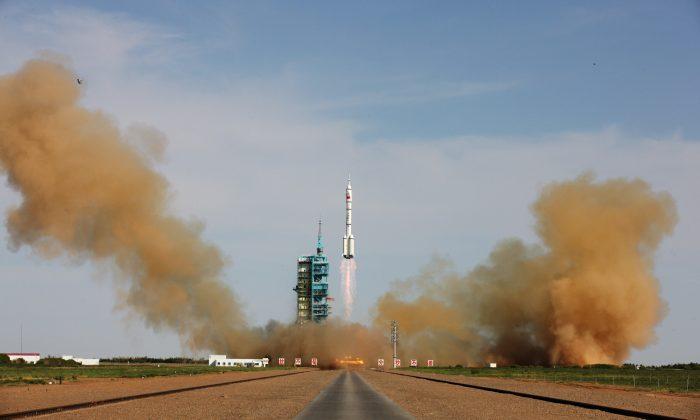China is formulating plans to build the infrastructure over the next 30 years to exploit an Earth-moon space economic zone that will generate $10 trillion a year by 2050.
Chinese military analyst
Wang Hucheng
stated two decades ago that “for countries that can never win a war with the United States by using the method of tanks and planes, attacking the U.S. space system may be an irresistible and most tempting choice.”
China launched its first satellite in 1970 and by 2003 became the third nation to launch an astronaut. China’s successes include a series of crewed space flights; two space stations, with plans for a third; lunar orbiters and a lunar rover; and a program to put Chinese “
taikonauts” on the moon.
To achieve these feats, China has an advanced family of rockets including the
Long March-5 carrier rocket that is scheduled for a 2020 mission launch of the Chang'e-5 probe to bring moon samples back to Earth.
Director of the Science and Technology Commission of the China Aerospace Science and Technology Corporation Bao Weimin at a space economy seminar on Oct. 29 revealed plans for a China Long March-9 heavy-lift carrier rocket to fly in 2030 to support manned lunar exploration, deep space exploration and construction of a space-based solar power plant. China intends to perfect transportation and establish its earth-moon space economic zone by 2050.
China and the United States as dominant powers view the space between Earth and the moon in the same geopolitical terms as the 1800 to 1907 “
Great Game” rivalry between Great Britain and Russia to gain supremacy across the Central Eurasian Plain as a strategy to control the resource-rich colonial “crown jewels” of China, India and Persia.
A 2016
white paper outlined the vision to “build China into a space power in all respects.” China has heavily invested in space activities to enhance its space technologies and by 2017 spent almost $11 billion on space, second only to the $48 billion by the United States.
Russia
partnered with China in 2015 for a $200 million venture fund to incubate innovative technologies and supported $182 million of venture capital investments in its ExPace Technology. China-based Tencent Holdings has invested in U.S.-based space startups such as Moon Express, Planetary Resources, and World View Enterprises.
China has launched a relay satellite as a continuous communications bridge between the Earth and its Chang'e-4 lunar probe that accomplished the first-ever soft landing on the “far side of the moon” on Jan. 3.
As of Nov. 2, China leads in space launches with
24 in 2019, followed by Russia with 19 and the United States trailing with 15. With only two failures this year, China is expected to conduct 5 more Long March-3B carrier rocket
launches to increase its constellation of 48 joint military/civilian BeiDou Navigation Satellites to 58 by the end of this year.
In addition to the military benefits of manned celestial basing, the U.S. Apollo moon landings brought back soil samples
containing deposits of surface water ice and other so-called “volatiles” to sustain human colonization in cold of minus 173 degrees Celsius.
Water is also a ready source of hydrogen for rocket fuel and oxygen as rocket fuel oxidizer. Other volatiles include hydrogen, helium, carbon, hydroxide and nitrogen. The moon may also contain a rare and wildly valuable lightweight isotope of helium called helium-3 that could be used as a fuel source in nuclear fusion reactors.
The United States leads China in space by completing hundreds more launches and demonstrating space sustainability by landing its secret Air Force X-37B spaceplane at NASA’s Kennedy Space Center on Oct. 27 after being in orbit for a record of
780 days.
Launched by a SpaceX Falcon 9 rocket on Sept. 7, 2017, the Boeing-built X-37B is one of at least three reusable autonomous spaceplanes that have accumulated 2,856 days in orbit. The X-37B tested the Advanced Structurally Embedded Thermal Spreader that is capable of transporting more than 45 times more heat than copper and that the Air Force is testing to help advance sustainable manned space vehicle designs.
The U.S.-based Caterpillar Company
announced on Oct. 30 that it is developing autonomous and remote control
space mining and construction equipment for NASA. Caterpillar has been building autonomous construction equipment since the 1980s and collaborated with NASA between 2004 and 2013. NASA spokesperson Clare Kelly stated: “There are many synergies between what NASA needs to meet exploration goals and Caterpillar technologies used every day on Earth.”
Chriss Street is an expert in macroeconomics, technology, and national security. He has served as CEO of several companies and is an active writer with more than 1,500 publications. He also regularly provides strategy lectures to graduate students at top Southern California universities.





